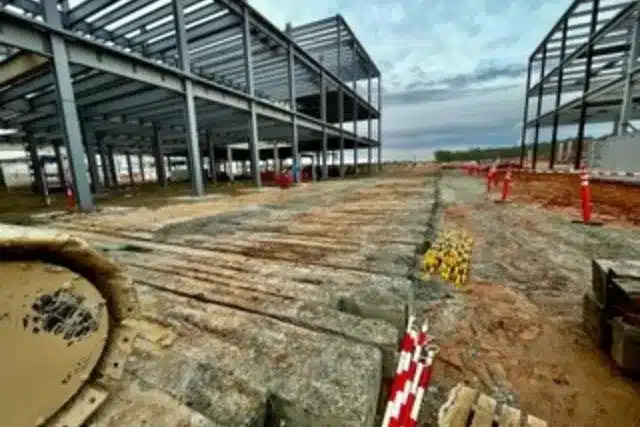When a workplace accident occurs, the immediate concern is the health and safety of the injured employee. However, beneath the surface lie the hidden costs — financial, emotional, and reputational — that ripple far beyond the initial incident. For businesses, especially those operating in high-risk industries such as construction, crane rental, manufacturing, and logistics, understanding the actual cost of a workplace accident is crucial in shaping a proactive safety culture.
Incorporating regular safety training and preventative planning isn’t just best practice, it’s a strategic investment in your workforce and your company’s future. In legal cases or serious investigations, companies may even require a construction safety expert witness to evaluate what went wrong and provide professional testimony on workplace safety requirements and regulations.
Direct vs. Indirect Costs of a Workplace Accident
When calculating the financial impact of a workplace injury, it’s tempting to look only at the direct costs. These include medical expenses, workers’ compensation, and legal fees. While these are quantifiable and sometimes covered through insurance, they represent only a fraction of the real cost. According to the National Safety Council (NSC), indirect costs can be four to ten times higher than direct costs.
Indirect Costs May Include:
- Lost productivity or schedule delays
- Overtime to make up for the injured worker
- Recruiting and training a replacement
- Lower morale among employees
- Increased insurance premiums
- Clean up time and expense
- OSHA citations and fines
- Damage to equipment or property
- Administrative time for incident investigations and paperwork
- Reputation damage and loss of business
Human Costs: Beyond the Balance Sheet
Perhaps the most overlooked consequence of a workplace accident is the human toll. A serious injury can permanently alter an employee’s life, and their family’s livelihood may be placed in jeopardy. The physical pain and psychological distress can lead to long-term disability, depression, or post-traumatic stress. For coworkers and supervisors, witnessing a traumatic incident can also have lasting effects. In some industries, a single mistake can result in catastrophic consequences, making the emotional aftermath profoundly significant.
Business Impact and Reputational Risk
In today’s digitally connected world, news of workplace incidents spreads quickly. OSHA violations, lawsuits, or media attention resulting from severe accidents can tarnish a company’s brand and make it more challenging to attract qualified employees and clients. Customers and partners often consider safety performance as part of their decision-making process.
Construction firms and subcontractors bidding for projects may lose opportunities if their safety records show a pattern of incidents. In legal proceedings following a serious incident, companies often rely on a construction safety expert witness to interpret safety standards and present professional findings. These expert evaluations can be pivotal in defending your company or validating claims.
Real-World Examples: Cost of Accidents
To put things into perspective, here are a few real-world examples:
A fall from height at a construction site resulted in a broken back. While direct medical costs totaled $75,000, indirect costs—including legal fees, downtime, and project penalties—exceeded $500,000.
A lockout/tagout failure at a manufacturing plant led to a worker losing a finger. OSHA cited the company, issuing fines. But reputational damage and retraining costs pushed the actual financial impact well into six figures.
A heat stroke incident during the summer halted operations for an entire crew for two days. The root cause? Lack of proper heat safety training and hydration protocols.
The ROI of Safety Training and Prevention
A robust safety program that includes regular and industry-specific safety training can dramatically reduce incidents and their associated costs. OSHA estimates that for every $1 invested in safety programs, businesses can expect a return of $4 to $6 in reduced costs and increased productivity.
Here’s how safety training delivers value:
- Risk Awareness: Employees are better able to identify and avoid hazards.
- Standardized Procedures: Training enforces consistent safe practices across teams.
- Compliance: Helps meet OSHA, MSHA, and industry-specific regulatory requirements.
- Culture Building: Promotes a mindset where safety becomes part of daily decision-making.
Whether it’s fall protection, confined space entry, equipment operation, or emergency response, tailored safety training equips workers with the tools and knowledge to perform tasks safely and efficiently. Investing in ongoing safety training sends a powerful message: your company values its people, prioritizes compliance, and is committed to operational excellence.
Safety as a Strategic Advantage
Companies that excel in safety often find it to be a competitive advantage. Safe workplaces have lower turnover, higher productivity, and more engaged employees. Workers are more likely to remain with organizations that demonstrate a commitment to their well-being, and this stability leads to improved productivity. Contractors with strong safety records are more likely to win bids and secure repeat business. Often, a strong safety track record can be the deciding factor in winning contracts. Clients and general contractors usually favor partners who can demonstrate strong safety programs and low incident rates. Moreover, proactive safety programs reduce the financial burden on companies and their insurance providers, contributing to long-term profitability.
The Critical Role of a Safety Expert Witness After an Accident
After a workplace accident, especially one resulting in serious injury or fatality, a safety expert witness often plays a crucial role in the investigation and legal process. These professionals have specialized knowledge in safety standards, industry regulations, and risk management practices. Their primary responsibility is to evaluate the circumstances surrounding the incident to determine whether proper safety protocols were followed and which regulations apply. By reviewing documentation, inspecting the accident site, and analyzing witness statements, depositions, and case files, a safety expert witness can identify contributing factors, such as equipment failures, inadequate training, or unsafe working conditions. In some cases, having access to a construction safety expert witness can help avoid litigation or reduce penalties by demonstrating due diligence and proper safety protocols.
In legal proceedings, a safety expert witness provides objective, fact-based testimony that helps clarify complex safety issues for attorneys, judges, and juries. Their expert opinion is often used to establish whether an employer acted with negligence or whether an accident could have been prevented with reasonable precautions. Due to their impartial stance and credibility, their findings can significantly impact the outcome of litigation, whether in civil lawsuits or workers’ compensation claims. Both plaintiffs and defense teams often call upon them to ensure a fair and thorough evaluation of the incident.
Beyond the courtroom, the involvement of a safety expert witness can drive meaningful improvements in workplace practices. Their insights often lead companies to reassess and enhance their safety programs to prevent similar accidents in the future. By identifying root causes and gaps in compliance, these experts help businesses reduce liability, improve employee safety, and foster a culture of accountability. In this way, a safety expert witness serves not only as a legal resource but also as a valuable partner in promoting long-term workplace safety.
The true cost of a workplace accident extends far beyond the initial report of the injury. While the financial hit can be steep, the real price includes disrupted lives, lost opportunities, and damaged reputations. The most effective way to minimize this cost is through a strong safety culture reinforced by regular, job-specific safety training.
At Safety Consulting Specialists, we help companies identify risk, train employees, and implement practical solutions to improve workplace safety and compliance. If you want to protect your workforce and your bottom line, contact us today to learn how our customized safety training programs and our construction safety expert witness services can make a difference.


